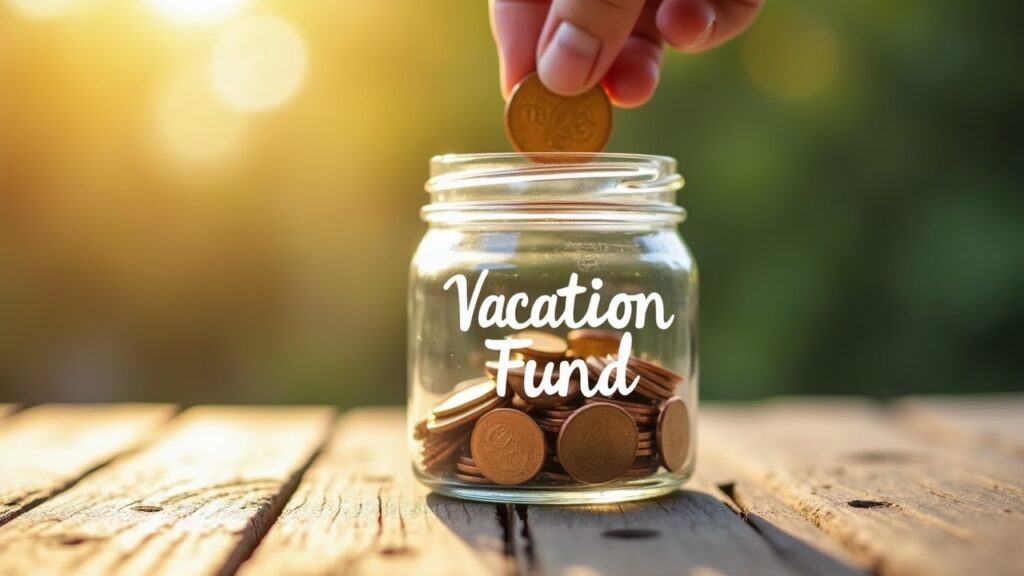Advertisements
Did you know that 56% of Americans can’t cover a $1,000 emergency expense? That stat used to be me! I’ll never forget the panic I felt when my car’s transmission died right before Christmas 2019.
Here’s the thing – sinking funds changed everything for me. They’re basically the financial equivalent of having a superhero in your back pocket, ready to save the day when life throws you a curveball.
After years of living paycheck to paycheck and putting emergencies on credit cards, I discovered this simple budgeting trick that honestly feels like cheating. Let me show you how sinking funds can transform your financial life too!
Understanding Sinking Funds: The Basics

So what exactly is a sinking fund? Think of it as a mini savings account for a specific future expense. Unlike your emergency fund (which is for true surprises), sinking funds are for expenses you know are coming.
I like to describe them as “planned savings buckets.” You’re basically breaking down big expenses into bite-sized monthly amounts. Instead of scrambling to find $1,200 for new tires, you save $100 a month for a year – boom, crisis averted!
The beauty is in the simplicity. You identify an upcoming expense, divide the total by the months until you need it, and save that amount each month. It’s like reverse engineering your financial peace of mind.
Common Types of Sinking Funds That’ll Save Your Sanity
Let me share the sinking funds that have literally saved my bacon over the years. First up: car maintenance. I learned this one the hard way after that transmission fiasco!
I now save $150 monthly for car repairs and maintenance. Some months nothing happens, other months I need new brakes. But guess what? The money’s already there waiting.
Here are my must-have sinking funds:
- Christmas gifts ($100/month – no more credit card hangover in January!)
- Annual insurance premiums (divide by 12 and forget about it)
- Home maintenance ($200/month because something always breaks)
- Vacation fund (even if it’s just for a weekend getaway)
- Pet expenses (Buddy’s vet bills ain’t cheap)
- Back-to-school supplies (those lists get longer every year)
The key is customizing to your life. Maybe you need a wedding fund or new laptop fund. Whatever big expenses loom in your future, there should be a sinking fund for it.
Setting Up Your First Sinking Fund: A Step-by-Step Guide
Alright, let’s get practical. When I started my first sinking fund, I made it way too complicated. Here’s the simple system that actually works:
First, grab a piece of paper (or your phone) and list every non-monthly expense you can think of. Property taxes, HOA fees, that family reunion next summer – everything. Don’t worry if it seems overwhelming; mine was three pages long!
Next, estimate the cost and when you’ll need the money. Be realistic here – I always add 10% buffer because prices seem to go up constantly. Then divide that amount by the months until you need it.
For example, if you need $600 for Christmas gifts in 10 months, that’s $60 per month. Easy math, right? I use my bank’s automatic transfer feature to move money into separate high-yield savings accounts for each fund.
Some folks prefer using envelopes or apps like YNAB (You Need A Budget). Whatever works for you! The method matters less than actually doing it.
Sinking Funds vs. Emergency Funds: Understanding the Difference
This confused me for years, so let’s clear it up. Your emergency fund is for true emergencies – job loss, medical crisis, zombie apocalypse (kidding… mostly). Sinking funds are for planned or predictable expenses.
Think of it this way: needing new tires isn’t really an emergency. Cars need tires – it’s gonna happen! But getting hit by an uninsured driver? That’s emergency fund territory.
I keep my emergency fund completely separate in a different bank. It’s got 3-6 months of expenses, and I pretend it doesn’t exist unless there’s a real crisis. My sinking funds, on the other hand, get used regularly and refilled constantly.
Making Sinking Funds Work in Real Life
Here’s where the rubber meets the road. The first few months were rough – finding extra money to fund these accounts felt impossible. I started small with just $25 for Christmas and $50 for car stuff.
One trick that helped? I treated sinking fund contributions like bills. They went on auto-transfer the day after payday, before I could spend the money on something dumb. Out of sight, out of mind!
Sometimes life happens and you gotta pause contributions. That’s okay! When my hours got cut last year, I reduced amounts but didn’t stop completely. Even $10 a month is better than nothing.
The game-changer was seeing it work. When my water heater died (why do they always fail at 10 PM?), I had $800 sitting in my home maintenance fund. No panic, no credit card, just transferred the money and called the plumber. That feeling? Priceless.
Learn Everything You Need To Know And More

Look, I’m not gonna lie – starting sinking funds takes some adjustment. But the peace of mind you’ll gain is worth every penny. No more dreading December or tax season!
Start tonight with just one fund. Pick whatever stresses you out most financially and begin there. Even if you can only save $20 a month, you’re already ahead of where you were yesterday.
Remember, personal finance is exactly that – personal. Your sinking funds should match your life, not mine or anyone else’s. Maybe you need a fund for comic conventions or home brewing equipment. Cool! Make it happen.
Want more practical money tips that actually work in real life? Check out other helpful guides at Cashflow Zen where we keep it real about building wealth without the boring finance jargon. Your future self will thank you for starting today!




[…] – you’re on the same team. Want more tips on managing your finances? Check out other helpful guides at Cashflow Zen to keep your financial journey moving […]